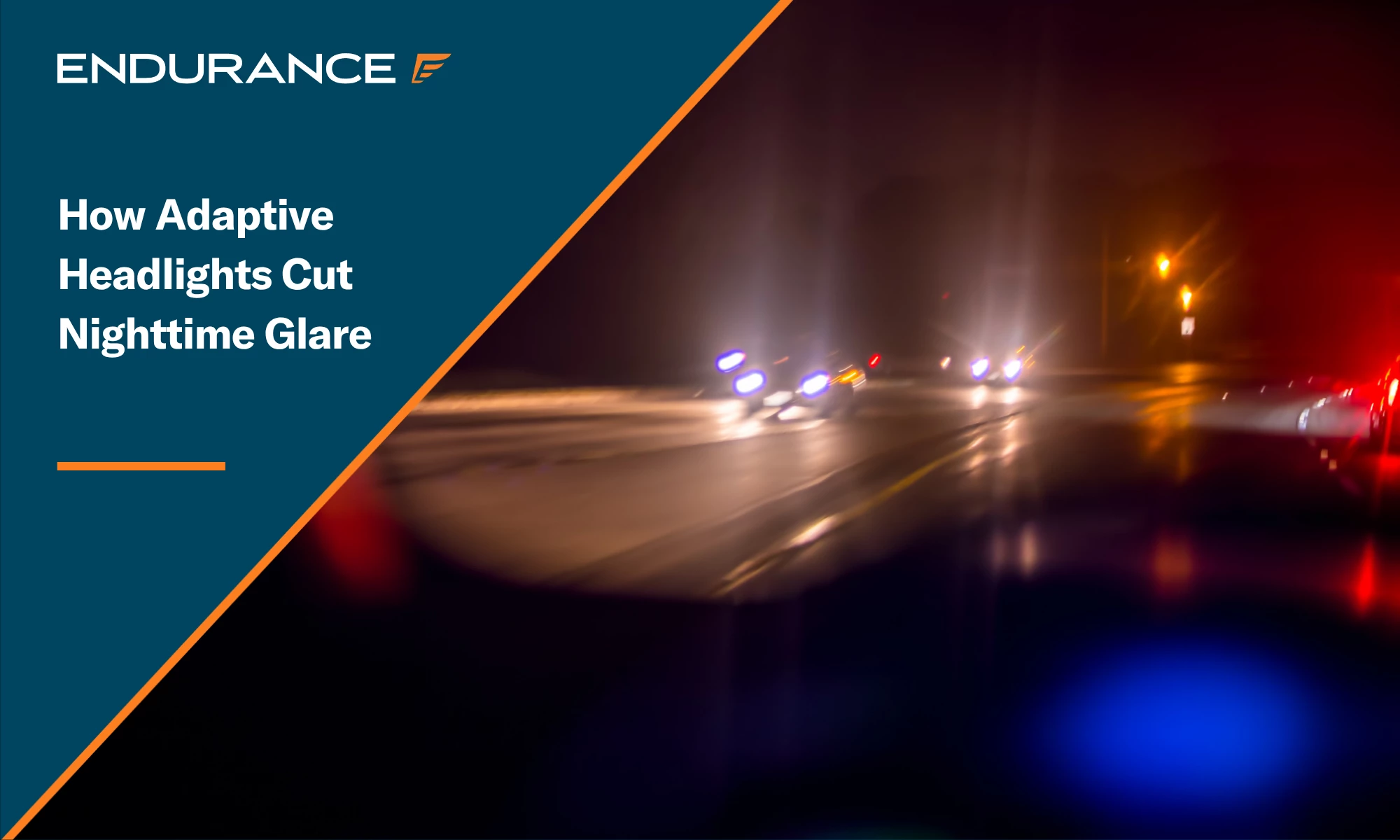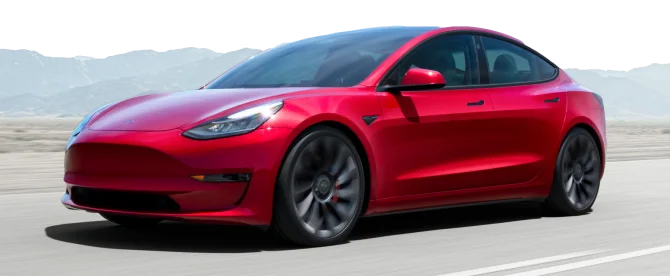Get this deal! Call now.
Speak with a vehicle protection plan specialist and get $300 off any new contract instantly.
Call 866-678-4172
or scan the code below


As the days start to grow shorter with fall and winter both on the way, drivers across the country will face a similar challenge: nighttime glare. As leaves scatter across damp roads, your headlights will inevitably reflect off the wet pavement. Further, the lower sun angle will also make it harder for your eyes to actually adjust quickly once the darkness sets in. Adding hours of time spent driving in the dark onto this, along with the risk from limited visibility, becomes one of the top concerns for drivers.
One innovation posed to help is automotive adaptive headlights. These beams adjust to the road, speed, and oncoming traffic. By actively reducing headlight glare and illuminating the road more, they can make driving safer and less stressful. Learn everything you need to know about the benefits of adaptive headlight technology, including why you should consider investing in them if you don’t already have them.
Nighttime driving is already inherently riskier than driving during the day, but the fall season adds unique conditions that amplify the dangers on the road. The most notable of these include:
Through studies it’s been shown that around 50% of fatal traffic accidents happen at night, going to show how important it is to be aware of the dangers of night driving. This risk is only amplified during the fall, which is why considering every possible safety measure is of paramount importance.
Most modern vehicle headlight systems feature automatic traditional headlamps at a minimum, but these aren’t the same as adaptive driving beams. Auto-high beams use a sensor that detects oncoming headlights or taillights in the distance. This sensor then automatically switches the beam strength between low and high. While this is a useful tool as it takes the job out of the driver’s hands, it’s still a fixed beam.
On the other hand, adaptive driving beams continuously adjust both beam shape and intensity based on road conditions. They can dim only a small portion of the beam, in order to avoid blinding oncoming drivers, while leaving your lane fully illuminated. Additionally, they provide this high level of illumination while reducing glare for everyone else. It took until 2022 for the National Highway Traffic Safety Administration (NHTSA) to officially announce that adaptive high-beams could be installed on new vehicles as they were navigating federal regulations.
Even if you don’t have adaptive technology installed on your car or the inability to install an aftermarket version, there are some quick improvements you can tackle to improve visibility on the road and help oncoming vehicles:
If a used car is what you’re in the market for, you shouldn’t just test drive it during the day, in bright light conditions, to see how it responds. You also need to test it at night. This will show how well the headlights perform and what visibility looks like on the road. Here is a quick-hit checklist to take with you on your test drive:
By testing out the visibility of the used car in the dark, you’ll be able to feel safer getting behind the wheel when the sun goes down.
Fall visibility issues aren’t the only problem that you’re likely to see on the road as the weather starts to get colder. Slicker roads, inclement conditions, and other factors can lead to the degradation of parts and cause breakdowns. This is why having an extended auto warranty or vehicle service contract in place can help. Offering financial protection for covered mechanical breakdowns, such a plan can provide you with reimbursement for eligible claims at approved repair shops.
At Endurance Warranty Services, we have a range of contract options to choose from, from high-level stated protection with our Secure Plus plan to comprehensive coverage closest to that offered by a manufacturer through our Supreme plan. Depending on your driving habits and unique needs on the road, our plans can be customized to suit your vehicle.
In addition to 24/7 roadside assistance, you can activate a year’s worth of our Elite Benefits package, which includes appealing perks such as:*
The above are just a sample of the benefits that an Endurance Warranty contract can bring to you and your vehicle. Find peace of mind on the road by investing in protection now.
Fall brings amazing weather, changing leaves, and unprecedented beauty, but it also brings tougher driving conditions when the sun sets. Making the investment into a vehicle with adaptive headlights or installing them after-market, if applicable, can be a smart way to reduce the risk of glare when getting behind the wheel. Adding on an extended warranty or vehicle service contract can sweeten the deal by protecting your wallet.
Prioritize your safety and reach out to one of our plan advisors at (800) 253-8203 or request a FREE quote. You can also see your price and plan recommendations now through our online store.

We've received your vehicle information and will contact you shortly with your quote.
— OR —
Start shopping for a coverage plan now.

We're here to make sure you get the most comprehensive EV protection. That's why we've partnered with Xcelerate Auto to offer you transparent and dependable Tesla coverage.
Want us to contact you about XCare coverage for your Tesla?



Your protection is our top priority. Your quote is in progress and you will
receive a confirmation
email shortly.


Speak with a vehicle protection plan specialist and get $300 off any new contract instantly.

Call for $300 off any new plan!
By clicking the button, you consent to Endurance using automated technology to call, email, and text you using the contact info above, including your wireless number, if provided, regarding auto protection or, in California, mechanical breakdown insurance. You also agree to the Endurance Privacy Policy and Terms and Conditions. Consent is not a condition of purchase, and you can withdraw consent at any time. Message and data rates may apply.


Speak with a vehicle protection plan specialist and get $300 off any new contract instantly.
Call 866-678-4172
or scan the code below



Simply fill out the information below and we will follow up fast with your free no-obligation quote.
By clicking the button, you consent to Endurance using automated technology to call, email, and text you using the contact info above, including your wireless number, if provided, regarding auto protection or, in California, mechanical breakdown insurance. You also agree to the Endurance Privacy Policy and Terms and Conditions. Consent is not a condition of purchase, and you can withdraw consent at any time. Message and data rates may apply.

To speak to a vehicle protection plan specialist and get $300 off any new contract instantly
Scan the code below
As both an Army Veteran & ASE Certified repair shop owner, Andrew has made educating the modern driver an ongoing mission since the opening of his repair shop, Midwest City Autospa, in 2012. Read more about Andrew.